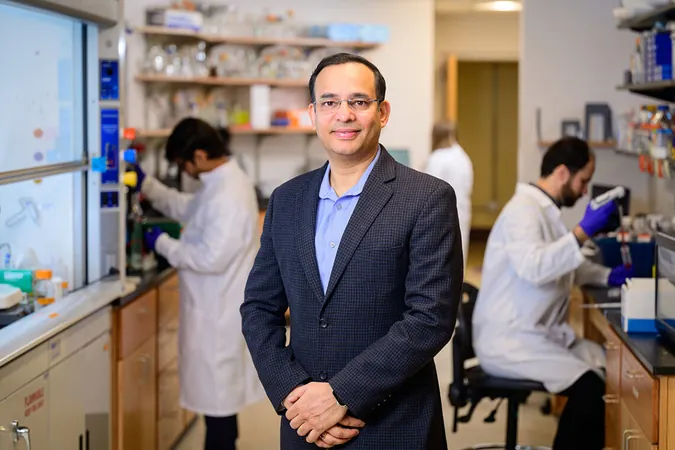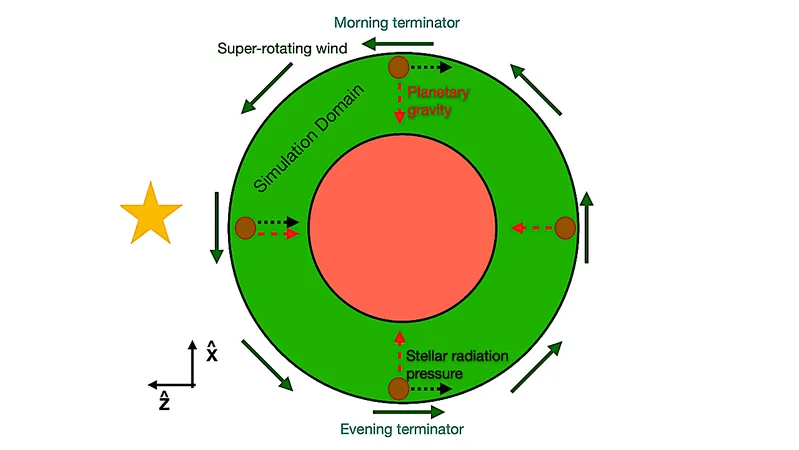
Excessive Alcohol Use Traps Liver Cells in a Dangerous Limbo: New Study Reveals
2025-09-10
Author: Rajesh
The Hidden Consequence of Alcohol on Liver Regeneration
CHAMPAIGN, Ill. — Scientists have unveiled a startling truth about excessive alcohol consumption: it disrupts the liver's exceptional ability to regenerate, leaving cells stuck in a perilous state of limbo even after individuals stop drinking. This groundbreaking study, conducted by researchers at the University of Illinois Urbana-Champaign in collaboration with Duke University and the Chan Zuckerberg Biohub Chicago, sheds light on how inflammation affects the liver’s recovery process.
What Happens When the Liver Can't Heal?
While the liver boasts a remarkable capacity to heal itself post-damage, its regenerative powers falter in patients suffering from alcohol-related liver disease, a leading cause of liver-related deaths worldwide, claiming nearly 3 million lives each year. Prof. Auinash Kalsotra from the University of Illinois, who co-led the study, emphasizes the dire need for understanding these mechanisms, as current treatments primarily involve liver transplantation once patients reach critical failure.
The Science Behind the Stagnation
Over five years, Kalsotra and his team studied how liver cells revert to a youthful state to regenerate. However, the new findings reveal a startling truth: liver cells caught in the throes of alcohol abuse start transitioning back to a regenerative state but fail to complete the process, remaining in a frustratingly ineffective limbo.
Co-first authors Ullas Chembazhi and Sushant Bangru note, "These cells are trapped between being functional and proliferative, adding pressure on healthy cells to regenerate. Ultimately, this contributes greatly to liver failure."
The Role of RNA Splicing in Liver Health
To investigate the dysfunction, the research team examined the RNA and protein profiles of both healthy and alcohol-compromised liver samples. They discovered that, unlike healthy livers, those affected by alcohol showed widespread missplicing of RNA — a crucial step that determines how functional proteins are assembled.
Their analysis determined that a key protein, ESRP2, essential for correct splicing and thus liver regeneration, was significantly deficient. "Although the total RNA and protein levels were there, they were not located correctly within the cells to function optimally," Kalsotra explains.
A Potential Path to Recovery
The research didn’t stop at discovery; it ventured into treatment possibilities. By studying mice lacking the ESRP2 gene, the team observed similar patterns of liver damage seen in advanced alcohol-related hepatitis. Furthermore, they pinpointed inflammatory factors released by liver support and immune cells as the reason for ESRP2 suppression.
Excitingly, when they inhibited one such inflammatory receptor in liver cell cultures, ESRP2 levels and splicing activity were restored, opening the door for potential treatments. Kalsotra expressed optimism about using these findings to develop diagnostic markers and treatments that can reduce inflammation, ultimately improving liver recovery.
A Step Toward Better Liver Health
This pioneering work not only enhances our understanding of liver pathology but also sets the stage for future clinical studies. By addressing how to repair splicing defects in liver cells, researchers are hopeful that they can help rejuvenate damaged livers and improve outcomes for those grappling with alcohol-related liver disease.




 Brasil (PT)
Brasil (PT)
 Canada (EN)
Canada (EN)
 Chile (ES)
Chile (ES)
 Česko (CS)
Česko (CS)
 대한민국 (KO)
대한민국 (KO)
 España (ES)
España (ES)
 France (FR)
France (FR)
 Hong Kong (EN)
Hong Kong (EN)
 Italia (IT)
Italia (IT)
 日本 (JA)
日本 (JA)
 Magyarország (HU)
Magyarország (HU)
 Norge (NO)
Norge (NO)
 Polska (PL)
Polska (PL)
 Schweiz (DE)
Schweiz (DE)
 Singapore (EN)
Singapore (EN)
 Sverige (SV)
Sverige (SV)
 Suomi (FI)
Suomi (FI)
 Türkiye (TR)
Türkiye (TR)
 الإمارات العربية المتحدة (AR)
الإمارات العربية المتحدة (AR)